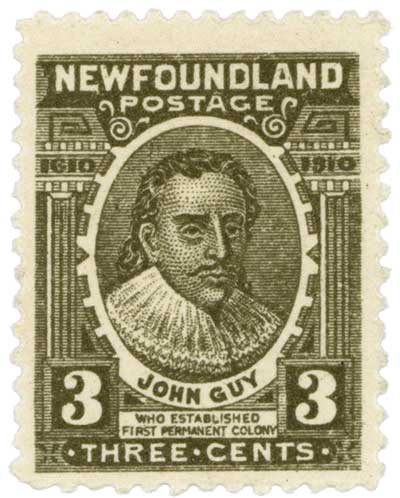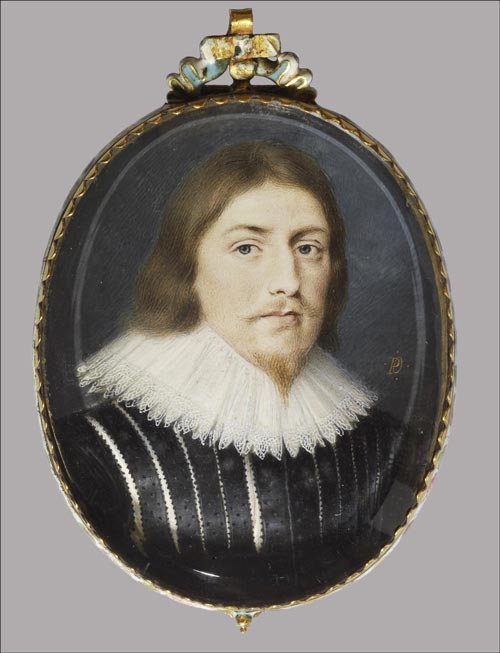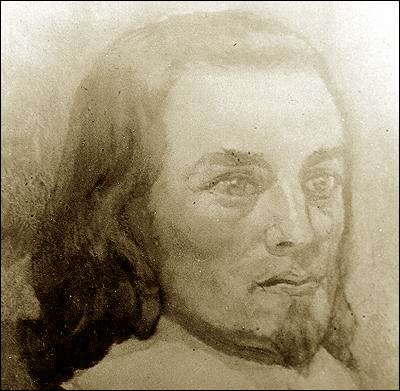Proprietary Governors, 1610-1728
This history of the governorship in Newfoundland begins in 1610, with the appointment of its first governor, John Guy. An active member of the mercantile community in Bristol, Guy had written a tract advocating English settlement in Newfoundland after visiting the island in 1608. With the backing of the London and Bristol Company, he successfully petitioned the British government for permission to establish a colony in Newfoundland. Guy set sail from Bristol with a small group of settlers, landed at Newfoundland in August 1610, and founded a settlement at Cupids in Conception Bay.

John Guy and the Colony of Avalon
Guy's colony initiated the era of the proprietary governors. His settlement was not an official colony, but rather a commercial enterprise sanctioned by the Crown. It was not a private business in the modern sense of the term. The legal basis of colonization was the charter issued by James I to the London and Bristol Company, a joint-stock company in which 40 investors had bought shares. This grant did not bestow colonial status -- Newfoundland did not receive a Royal Charter until 1825 -- but it did confer certain rights, liberties, and powers. Like the charters governing other English colonies in America, it formed a type of public contract between the sovereign and the individuals or corporation responsible for overseeing the settlement. As governor of a chartered colony, Guy faced an array of legal responsibilities. To ensure that their investment remained secure, the shareholders issued a detailed list of instructions ordering Guy, among other things, to prevent idleness among the colonists and to ensure that religious services were held regularly. Troublemakers were to be sent back to England on the first available ship and publicly discharged from the company. Guy's colony was not beyond the pale of English law, therefore, but operated within a specific set of written laws and regulations.

Other Colonization Attempts
There were at least six other serious attempts to establish colonies in 17th century Newfoundland, however, and this created a tangled web of political claims and legal jurisdictions. Whereas George Calvert (Lord Baltimore) was granted an individual charter to found a colony at Ferryland, other proprietors, such as William Vaughan, had purchased land directly from the London and Bristol company. When Sir David Kirke became co-proprietor under a charter granted to the Company of Adventurers in 1637, he assumed the position of governor and took possession of Ferryland. But Kirke made dangerous political enemies and alienated many West Country merchants. Cecil Calvert (the second Lord Baltimore) reasserted his family's claim to Ferryland: he successfully pursued lawsuits against Kirke, who died in an English prison in 1654, but did not acquire local control over the colony.

The rule of the proprietary governors never became firmly established because their colonies failed to prosper. None of the 17th century ventures ever returned a profit, leaving many investors bankrupt, and the lack of revenue inhibited the governors' ability to develop a local infrastructure. The costs of colonization were high -- Lord Baltimore had spent more than £20,000 on his venture -- and the settlements never became economically self-sufficient. While the island's population remained too small to support formal government institutions, the proprietary governors and their backers were often preoccupied with affairs in England. They were in many respects a product of their times -- 17th century England experienced dramatic social and political upheaval, culminating in the Civil War and the execution of Charles I in 1649 -- and this instability affected their efforts to garner support for the colonization of Newfoundland.
The Proprietary System
The proprietary system persisted in various forms until 1729, when the island's first naval governor was appointed. Taken together, the regimes of John Guy and his peers represent an isolated period in the history of the governorship in Newfoundland. The proprietary governors left no legacy for the naval governors to follow; indeed, the customs of the migratory fishery, such as the fishing admirals system, exerted a far greater influence over the island's constitutional development. What they did leave us were fascinating stories of struggle and intrigue which rival works of fiction. While living at Cupids in 1612, John Guy, for example, had to contend not only with the problems of managing a new settlement, but he also had to deal with the famous pirate Peter Easton, whom he persuaded to leave the colony alone. Although the proprietary governors failed to build a prosperous colony, their turbulent history has become an important part of our cultural memory.




